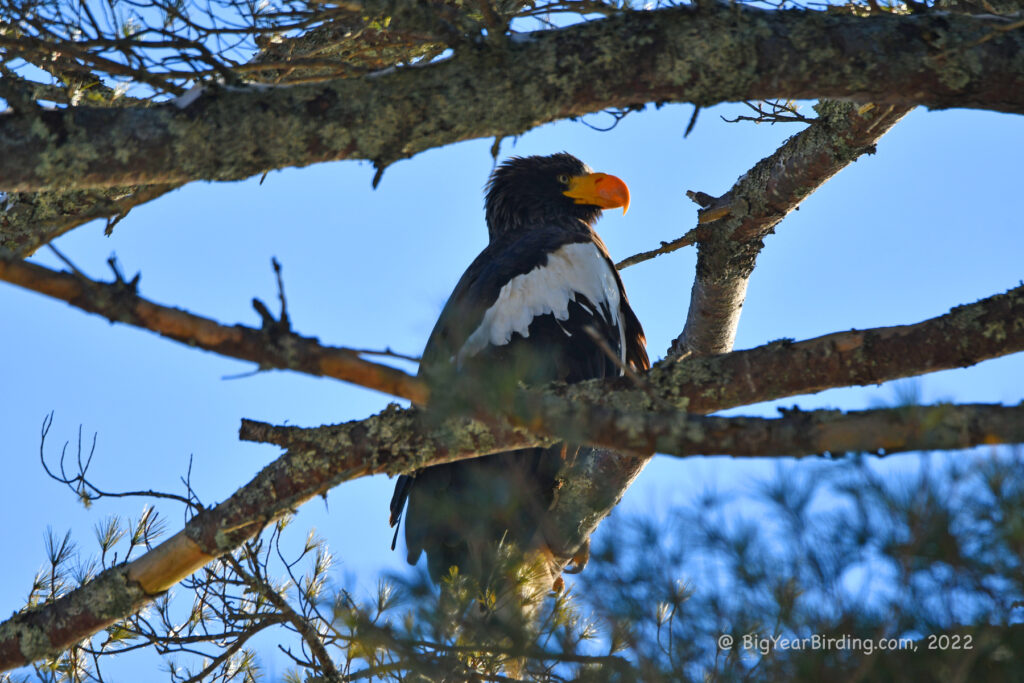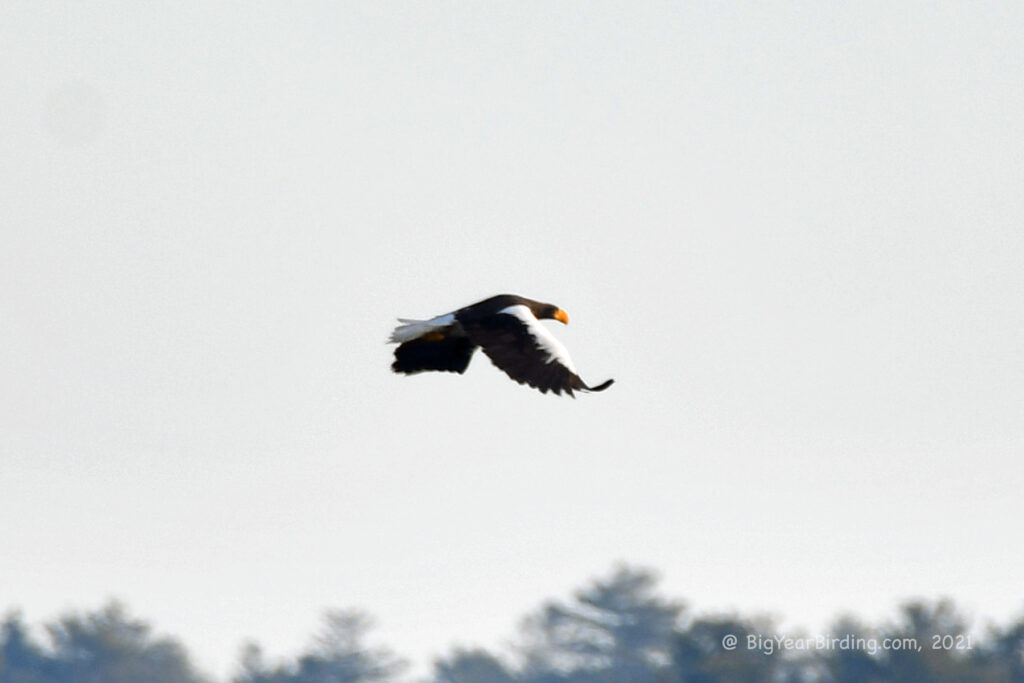
The Steller’s Sea-Eagle is a large bird of prey that is native to the coastal regions of northeastern Asia, including Japan, Russia, and the Kamchatka Peninsula. It is one of the largest eagles in the world, with a length that can reach up to 3 feet and a weight of up to 14 pounds. This impressive bird is easily recognizable by its distinctive physical features and markings.
The Steller’s Sea-Eagle has a massive build, with a large, powerful beak and talons that are capable of gripping and carrying large fish. Its wingspan can reach up to 7 feet, making it one of the largest birds of prey in the world. The adult birds have a dark brown body with white head, tail, and underparts. Juvenile birds have a brownish-black plumage, which they slowly lose as they mature into adulthood.
One of the most distinctive features of the Steller’s Sea-Eagle is its bright yellow beak and legs, which contrast sharply against its dark plumage. This bird is also known for its impressive size, with a wingspan that can reach up to 7 feet. In addition to its physical characteristics, the Steller’s Sea-Eagle is also known for its powerful call, which is a deep, resonant screech that can be heard from great distances.
Despite its impressive size, the Steller’s Sea-Eagle is not a migratory bird species. Instead, it is resident throughout its range, and can be found in coastal areas and along the shores of large rivers and lakes. The bird primarily feeds on fish, and is often seen swooping down from the sky to snatch its prey from the water’s surface.

In conclusion, the Steller’s Sea-Eagle is a large and impressive bird of prey that is easily recognizable by its distinctive physical features, bright yellow beak and legs, and powerful call. This bird is resident throughout its range, and can be found in coastal areas and along the shores of large rivers and lakes. With its impressive size, hunting skills, and unique characteristics, the Steller’s Sea-Eagle is an important and fascinating species in the world of ornithology.

